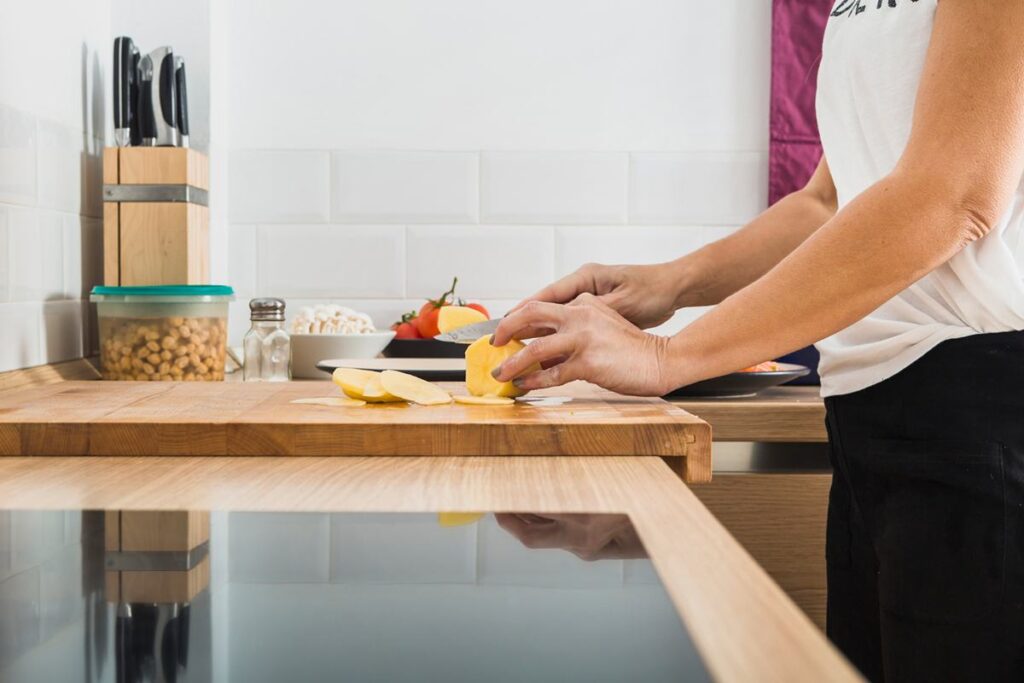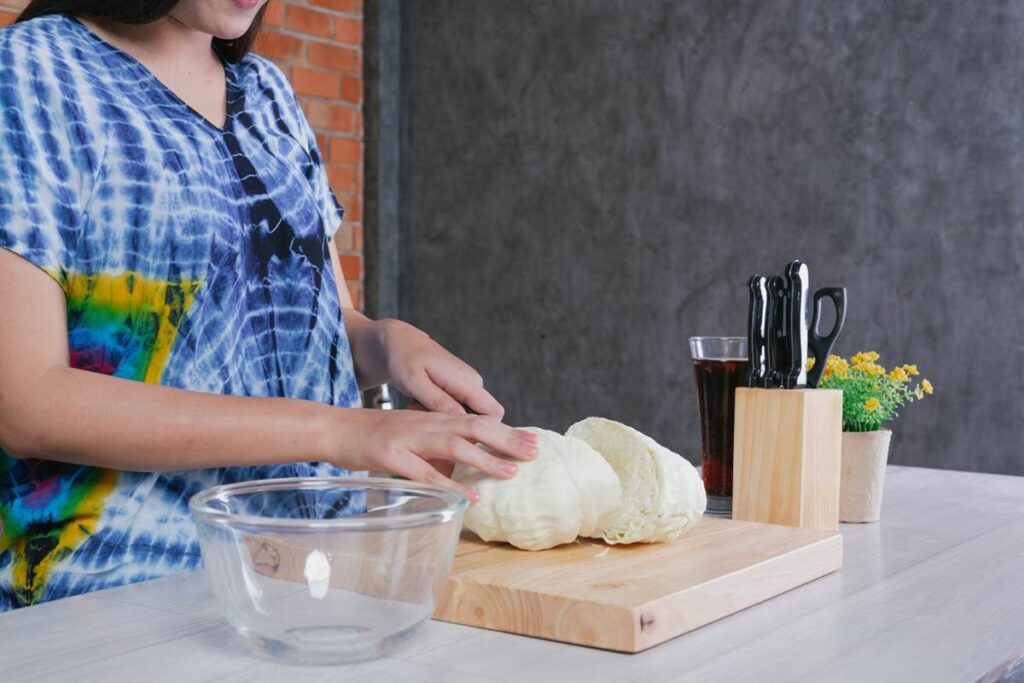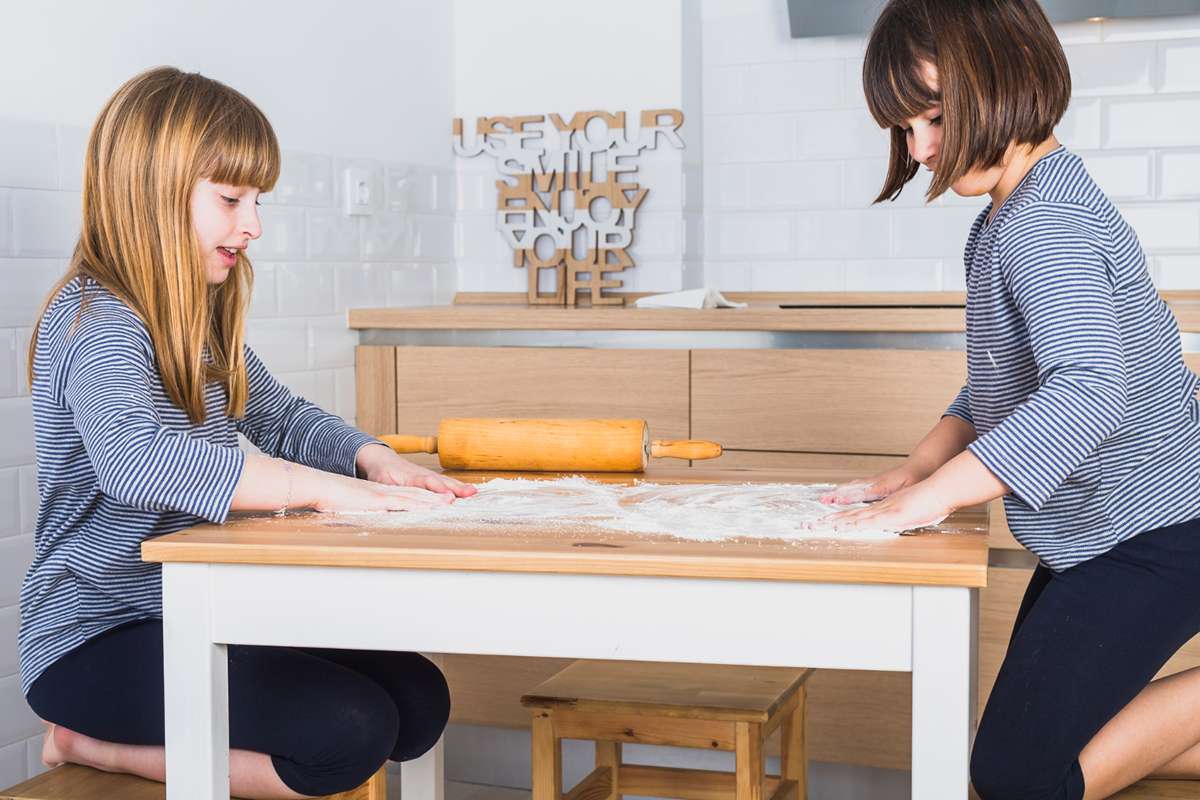Is your kitchen table starting to look old, scratched, or faded? Don’t worry—you don’t need to buy a new one or hire a pro. With just a few simple tools and some patience, you can learn how to restain your kitchen table at home—even if you’ve never done it before. Restaining helps bring back the table’s natural beauty, gives your kitchen a fresh new look, and costs way less than replacing it. In this easy guide, you’ll learn step-by-step how to clean, sand, stain, and protect your table—without stress or confusion.
What You Need Before You Begin
Before you start restaining your kitchen table, it’s important to get all your tools and supplies ready. Having everything in place will make the process smoother and faster. Don’t worry—you don’t need fancy tools. Most of these items are easy to find at home or your local hardware store.
Tools and Supplies Checklist
Here’s a list of what you’ll need:
- Sandpaper or sanding block – Helps remove the old finish and smooth the surface.
- Wood stain – Choose a color you like. This will refresh the table’s look.
- Paintbrush or rag – Use it to apply the stain. A rag gives a softer finish.
- Gloves, drop cloth, and old clothes – Staining can be messy, so protect yourself and your space.
- Cleaner (like vinegar and water) – Clean the table before starting to remove grease and dirt.
Safety First
Restaining is simple, but it’s important to stay safe while doing it. Here are some quick safety tips:
- Work in a well-ventilated area – Stains can have strong smells, so open windows or work outside if you can.
- Wear a mask and gloves – This protects your skin and lungs from dust and chemicals.
- Protect your floor with a cloth – Lay down an old sheet or drop cloth to avoid spills and stains on your flooring.
Step-by-Step Guide: How to Restain Your Kitchen Table
Restaining your kitchen table might sound tricky, but it’s easier than you think. By following these simple steps, you’ll give your table a fresh, clean look that feels brand new. Whether you’re a beginner or someone with DIY experience, this guide will walk you through everything.
Step 1 – Clean Your Table

Before anything else, make sure your table is clean. Any grease, crumbs, or dust can stop the stain from soaking in properly.
- Remove all food, dust, and sticky spots.
- Use warm soapy water or a mix of vinegar and water to gently scrub the surface.
- Let the table dry completely before moving to the next step.
Step 2 – Lightly Sand the Surface
Sanding helps remove the old finish and rough patches so the new stain can stick better. It also smooths out scratches or marks.
- Use medium-grit sandpaper or a sanding block.
- Sand the entire table surface gently and evenly in the direction of the wood grain.
- If your table has a veneer top, go easy to avoid sanding through the thin layer.
Step 3 – Wipe Off the Dust
After sanding, your table will have leftover dust. It’s important to clean it off completely.
- Use a damp cloth or a tack cloth to wipe the surface.
- Make sure no dust is left behind, as it can mess up the finish.
Step 4 – Apply the New Stain
Now comes the fun part—adding color to your table! This step brings the table back to life.
- Dip a brush or soft cloth into the wood stain.
- Apply it in the direction of the wood grain to avoid streaks.
- Start with a light coat and let it dry for a few hours. Add more coats if you want a darker color.
- Always follow the drying time on the stain label.
Step 5 – Add a Clear Topcoat (Optional but Recommended)
To protect your hard work and make the finish last longer, seal your table with a clear topcoat.
- Use polyurethane or a water-based sealant.
- Apply with a clean brush in thin, even layers.
- Let it dry fully before using the table again—this can take up to 24 hours.
How to Restain Your Kitchen Table for Beginners
If you’ve never worked on furniture before, don’t worry. Learning how to restain your kitchen table is beginner-friendly and doesn’t require expensive tools or expert skills. You can get amazing results by following just a few simple steps.
Beginner-Friendly Steps to Follow
Here’s a quick breakdown of what you need to do:
- Clean the table – Use warm soapy water or vinegar to remove grease and dirt.
- Lightly sand the surface – Use medium-grit sandpaper to smooth the table and remove old stain.
- Wipe away the dust – A damp or tack cloth works well.
- Apply the stain – Use a brush or cloth and go with the grain. Start with one light coat.
- Seal it (optional) – Add a clear topcoat to protect your table for years to come.
Helpful Tips for First-Timers
- Try gel stain if you want an easier product that’s less messy and more forgiving.
- If sanding feels overwhelming, see our guide below on how to refinish a table without sanding.
- Practice on a small spot underneath the table before doing the full surface.
Can You Refinish a Table Without Stripping the Old Stain?

Yes, you can! If you’re looking for a quicker and less messy way to refinish your table without stripping the old stain, there are some great alternatives. One of the easiest methods is using gel stains or tinted polyurethane.
How Gel Stains Help
Gel stains are perfect for light touch-ups and are a great solution for refinishing a table top without stripping. They don’t require sanding or stripping off the old finish, and they work well on wood that still has some of its natural texture and color.
- Gel stains are thicker than traditional stains, so they won’t drip or run, making them easier to control.
- Simply apply the gel stain over the old finish, and it will blend in nicely, enhancing the color of the wood without needing to remove the previous stain.
Using Tinted Polyurethane
Another option is tinted polyurethane. It combines both a stain and a protective finish in one, which makes it perfect for quick refinishing.
- Apply it directly over your existing finish.
- It’s great for touch-ups and small refinishing projects, and it helps protect the wood surface as well.
How to Refinish a Table Without Sanding
If you’re short on time or prefer an easier method, you can still refinish your table without sanding. One of the best options for this is using a deglosser or liquid sander. These products help remove the old finish and prepare the surface for the new stain without the need for sanding.
Using a Deglosser or Liquid Sander
- A deglosser is a liquid solution that softens the old finish, making it easier for the new stain or paint to stick.
- Simply apply the deglosser to the table with a clean cloth or sponge and wipe away the old finish.
- After the surface is dry, you can proceed to apply the new stain or paint.
This method is perfect for small touch-ups or if you’re looking to refresh your table quickly without all the sanding. It’s a great option when you don’t want to spend hours sanding or dealing with dust.
Why This Method Works
Using a deglosser is especially useful if you have a busy schedule. It’s a fast and efficient way to give your kitchen table a fresh look. The result is similar to sanding but without the mess and extra effort.
Refinish Dining Table Before and After (With Photos or Description)
One of the best ways to see the benefits of restaining your kitchen table is by comparing the before and after results. Restaining can completely transform your table, giving it a fresh, modern look. Here’s how the appearance, feel, and style can change after a successful refinishing project.
Visual Difference After Restaining
After completing the restaining process, you’ll notice a significant transformation in both the appearance and feel of your table. The difference is usually quite striking.
- Appearance: The surface goes from being scratched, faded, and dull to looking shiny, clean, and evenly colored.
- Feel: The rough and sticky surface will become smooth and polished, making it more pleasant to touch.
- Style: The table’s outdated look can be replaced with a fresh, modern vibe that complements your kitchen’s aesthetic.
Before vs. After Comparison
Here’s a simple before and after comparison to give you a clearer idea of what to expect:
| Step | Before | After |
| Appearance | Scratched, faded, dull | Shiny, clean, even-colored |
| Feel | Rough, sticky | Smooth, polished |
| Style | Outdated look | Fresh modern vibe |
Why Restaining Makes Such a Big Difference
By restaining, you’re not just giving your table a fresh coat of color. You’re rejuvenating the wood, enhancing its natural beauty, and bringing new life to the piece. Restaining gives your kitchen table a more polished, updated appearance without the need for expensive replacements.
How to Refinish a Table with Paint (Instead of Stain)

If you’re looking to give your kitchen table a bold new look, painting may be the perfect option. While stain enhances the natural wood grain, paint offers a unique and vibrant finish that can completely transform the style of your table.
Choosing Paint Over Stain
- Paint gives your table a more solid, opaque color, while stain lets the natural wood grain shine through.
- Paint is ideal if you want a bold, modern look or if you prefer a specific color that complements your kitchen’s design.
- Stain, on the other hand, is better for those who want to enhance the wood’s natural beauty without covering it up.
Steps to Refinish a Table with Paint
- Preparation: Clean your table thoroughly to remove any dust or dirt.
- Prime: Apply a coat of primer to create a smooth base for the paint.
- Paint: Use a paintbrush or roller to apply your desired paint color. You may need 2-3 coats, depending on the paint type.
- Seal: Finish with a protective topcoat to seal the paint and prevent scratches.
Tips for Painting Your Table
- Use chalk paint for a matte, vintage finish or latex paint for a glossy, durable finish.
- Always prime first to help the paint adhere better and avoid peeling.
- Don’t forget to seal the paint with a clear polyurethane or a wax finish for added protection.
Pros and Cons of Painting vs. Staining
| Pros of Painting | Cons of Painting |
| Provides a bold, customized look | Can hide the wood grain and texture |
| Available in endless colors | May require more maintenance than stain |
| Perfect for a modern, sleek finish | Can chip or scratch more easily over time |
| Works well on furniture with imperfections | More time-consuming than staining |
| Pros of Staining | Cons of Staining |
| Enhances wood’s natural beauty | Limited in terms of color options |
| Provides a natural, rustic look | May require reapplication over time |
| Allows the wood grain to shine through | Can be more difficult to apply evenly |
| Durable and long-lasting | Not ideal for covering imperfections on wood |
Why Choose Paint?
While both paint and stain have their benefits, choosing paint is perfect if you’re looking to make a bold statement. With a wide variety of colors and finishes, painting your kitchen table is a great way to add personality and style to your space.
Refinish Dining Room Table Veneer Top
When refinishing a dining room table with a veneer top, it’s essential to understand the key differences between real wood and veneer. Veneer is a thin layer of real wood that’s glued to a more affordable substrate, such as MDF or plywood. While it looks like solid wood, it requires a more delicate approach when refinishing to avoid damaging the top layer.
Difference Between Real Wood and Veneer
- Real Wood: A solid piece of wood throughout, ideal for heavy sanding and refinishing without significant risk of damage.
- Veneer: A thin layer of wood on top of a composite or engineered material. Sanding too aggressively can remove the veneer layer, causing irreversible damage.
Tips for Refinishing a Veneer Table
- Use Light Sanding: Always be gentle when sanding a veneer surface. Use fine-grit sandpaper (220 grit or higher) and apply minimal pressure. This helps preserve the thin veneer layer.
- Avoid Soaking the Veneer: When cleaning or applying stain, never soak the veneer. Excess moisture can cause the veneer to warp or peel.
- Test Before Full Application: Always test your stain or finish on a small, inconspicuous area to see how it reacts with the veneer.
How to Refinish a Table for Beginners – Extra Tips
Refinishing a table can seem like a big task, but with a few simple guidelines, even beginners can achieve professional results. Here are some extra tips to help ensure your project goes smoothly:
- Use a Test Patch Before Full Stain: Always try your stain or paint on a hidden spot before applying it to the entire table. This helps ensure the color and finish are what you expect.
- Always Read Product Labels: Before applying any products (stain, paint, or sealant), be sure to read the labels. This helps you understand drying times, application techniques, and any safety precautions.
- Don’t Rush Drying Time: Allow each layer of stain or paint to dry fully before applying the next coat. Rushing this process can result in streaks or uneven finishes.
FAQS
How to restain a kitchen table?
To restain a kitchen table, clean the surface thoroughly, sand it lightly, and apply a wood stain of your choice. Make sure to apply in thin layers and let each coat dry before adding another. Finish with a protective topcoat for long-lasting results.
What do you put on a kitchen table after staining?
After staining your kitchen table, apply a clear protective finish such as polyurethane or a water-based sealer. This will help protect the stain from scratches, spills, and daily wear. Allow sufficient drying time before using the table.
What is the best stain for kitchen table?
The best stain for kitchen tables depends on your desired look and wood type. Oil-based stains provide a rich color and long-lasting finish, while gel stains are great for easier application, especially on porous woods. Choose a color that complements your kitchen decor.
How to fix stains on a kitchen table?
To fix stains on a kitchen table, clean the affected area with a gentle cleaner and apply a light sanding if necessary. For deep stains, try using a wood stain touch-up marker or reapply a full coat of stain. Don’t forget to protect the surface with a topcoat.
Does Vaseline remove water stains from wood?
Yes, applying a small amount of Vaseline to water stains on wood can help remove them. Gently rub the Vaseline into the stain and let it sit for a few hours before wiping it off. This method works best for minor water stains on finished wood surfaces.
What is the best fabric stain remover?
The best fabric stain remover is one that’s suited for the type of stain and fabric. For general stains, a product like OxiClean MaxForce or Zout can work wonders. Always follow label instructions and test the product on a hidden area before use.
Can you restain a kitchen table without sanding?
Yes, you can restain a kitchen table without sanding by using a deglosser or liquid sander. This method helps prepare the surface for a new stain without damaging the wood or finish.
How long should you wait between coats of stain on a table?
It’s recommended to wait at least 4-6 hours between coats of stain. Make sure the previous coat is fully dry before applying the next to avoid streaks or uneven coloring.
How do you maintain a kitchen table after restaining?
To maintain your kitchen table after restaining, regularly clean it with a soft cloth, avoid harsh chemicals, and use coasters to prevent water rings. Reapply a protective finish every couple of years to keep the wood looking fresh.
Conclusion
Restaining your kitchen table is a simple yet rewarding project that can breathe new life into your dining space. By following the easy steps we’ve covered, such as cleaning, sanding, and applying the stain, you can transform your table into a stunning piece without spending a lot of money or time.
Recap of Easy Steps:
- Clean the table to remove dirt and grime.
- Lightly sand the surface for better stain adhesion.
- Apply the stain in light coats, following the wood grain.
- Add a topcoat to protect the finish and ensure durability.
Ready to Try It This Weekend?
Why not tackle this weekend project? With just a few hours and some basic supplies, you’ll be amazed at the transformation you can achieve. Whether you’re a beginner or a seasoned DIYer, restaining your kitchen table is an easy way to enhance the heart of your home.










